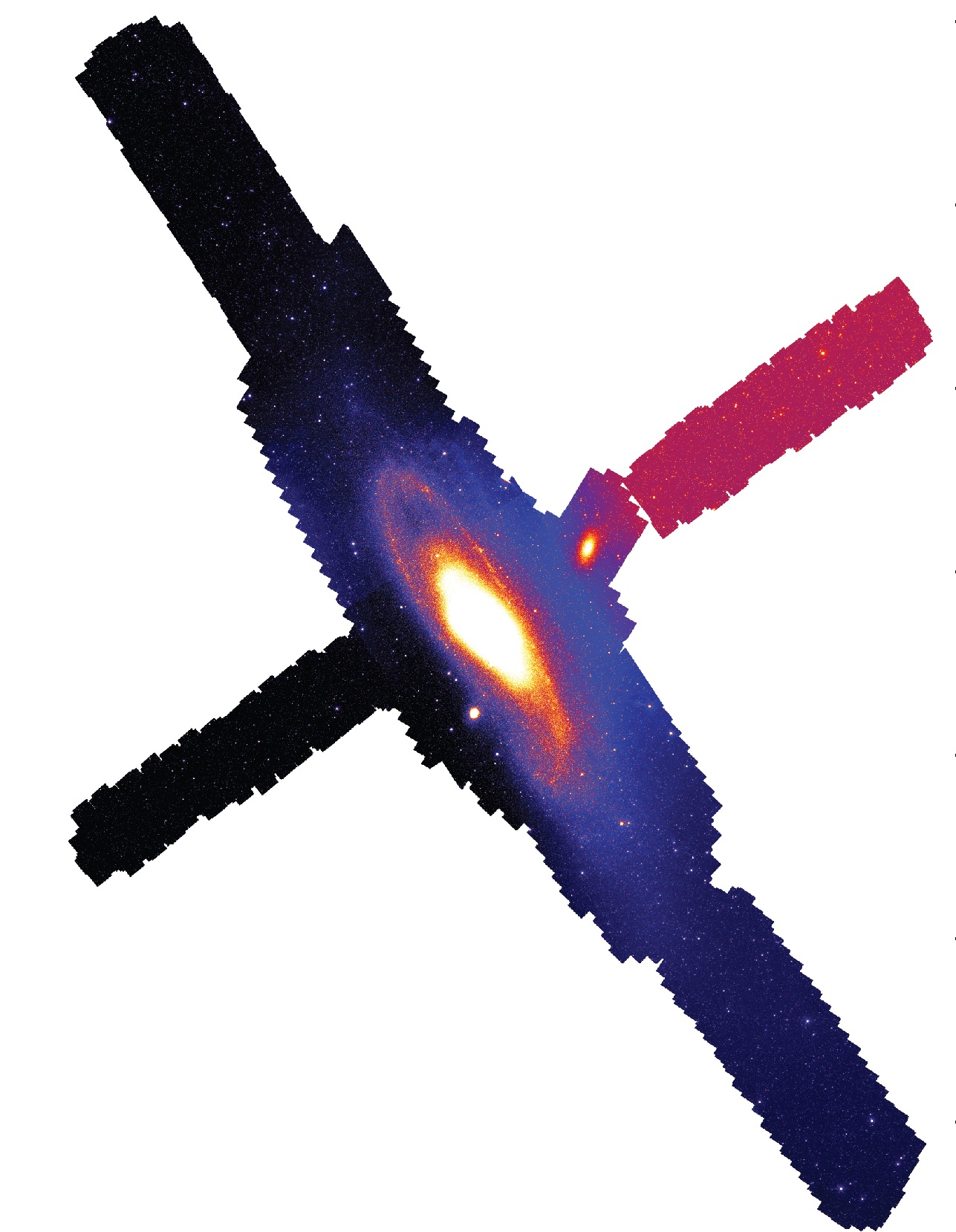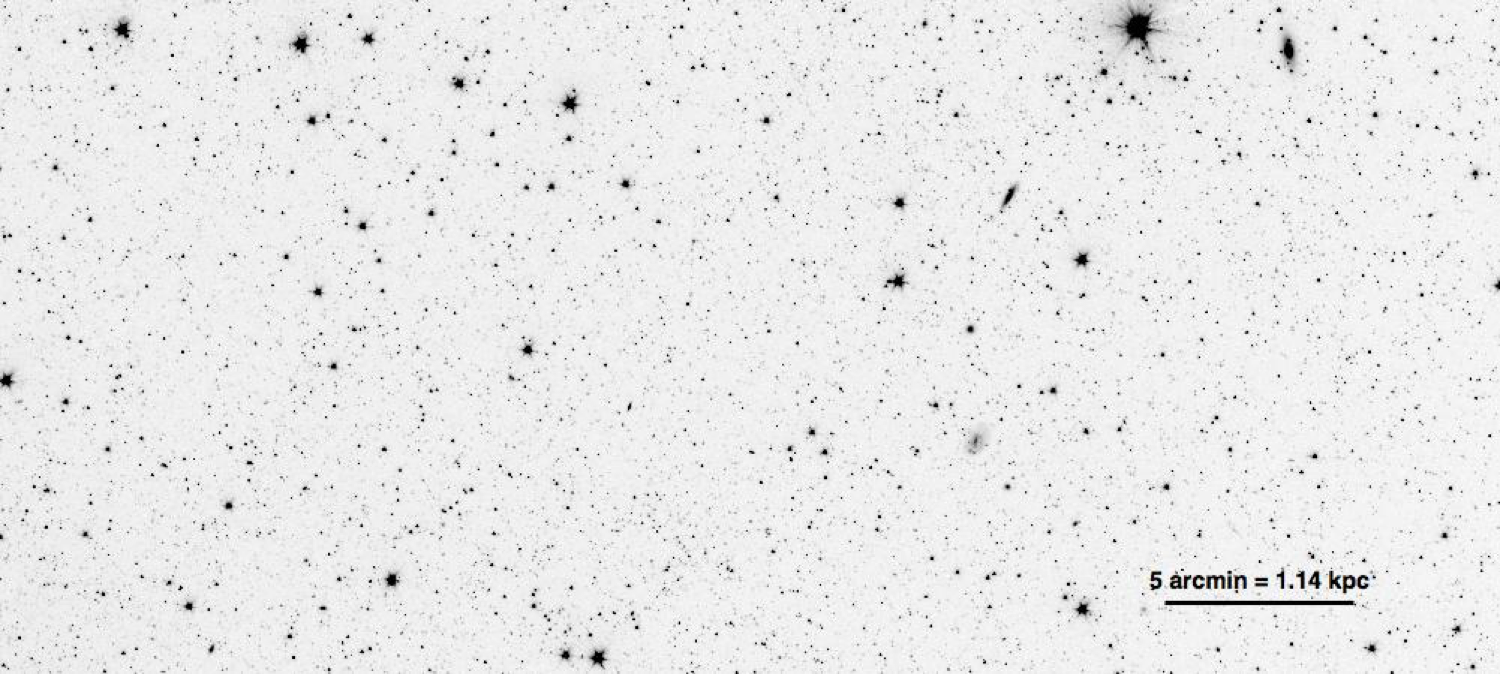The sky is big
Space is big. You just won’t believe how vastly, hugely, mind- bogglingly big it is. I mean, you may think it’s a long way down the road to the chemist’s, but that’s just peanuts to space.
Douglas Adams, “The Hitchhiker’s Guide to the Galaxy”
Apparently I have too much spare time, because I’m spending some of it knitting Celestarium, a shawl that maps out the northern constellations. I had an interesting professional realization while working on it over the weekend: the sky is big. I mean, really big.
I calculated that Celestarium has about 50120 stitches, not counting the edging. It’s supposed to be half the celestial sphere, so that’s 2pi steradians or 20626.5 square degrees1. This means that each stitch is about 0.4 square degrees, or roughly one and a half times the area that the full Moon covers on the sky.
In my professional work I’ve worked on astronomical images covering what I would have said were pretty big pieces of sky, like this one from a recent paper:

This image of region of sky containing the Andromeda galaxy is about 6.6 degrees along the upper-left-to-lower-right diagonal (the major axis of the galaxy) and about 4.4 degrees the other way. There are an awful lot of stars in that image here’s a close-up of part of it:

This image covers about 0.2 square degrees - half a stitch in my knitted piece, with millions of M31 stars and billions more in the background (look for the the distant galaxies on the right-hand side). “Deep field” observations like the Hubble Extreme Deep Field cover even smaller areas than this.
Physically knitting these many many stitches, and realizing that each of them represented an area quite large compared to the nearby galaxies that I think about every day, really brought home to me how big the sky is. Surveying all of it, or even some reasonable fraction, is a pretty heroic endeavour. It’s no accident that the Sloan Digital Sky Survey and the Large Synoptic Survey Telescope, to name just a couple of surveys, needed huge teams of people to make them work.
It’s a big universe. Seems fitting that the sky should be big too.
1If you are studying for your PhD exam, that number should look familiar..